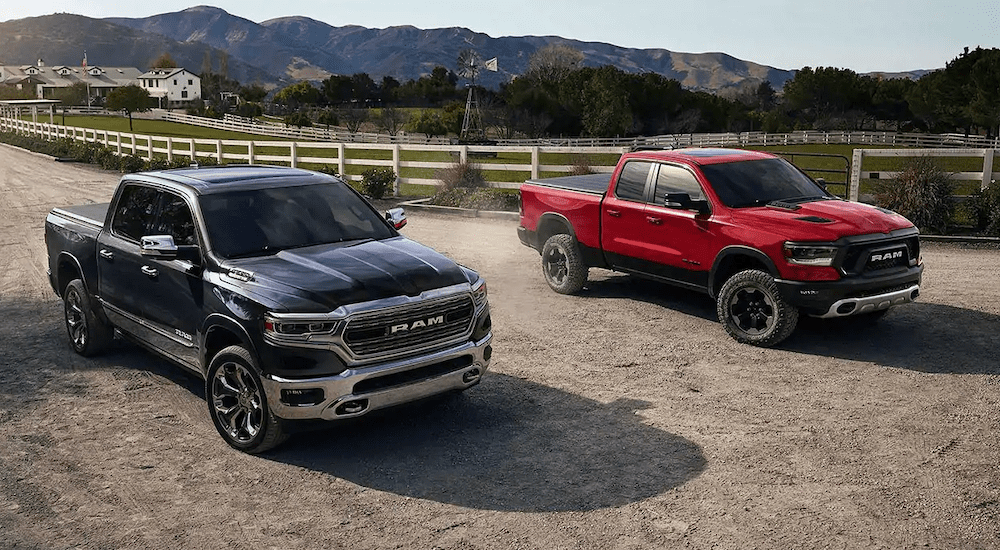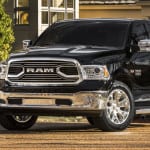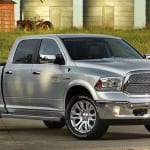When it comes to SUVs, cars or trucks, we all have our preferences. No shame in knowing what you like, right? And while my tastes may not necessarily reflect yours, it’s important to recognize that we gain some of the most positive exposure by listening to other people’s opinions. So, when I was assigned the task of discussing my favorite trucks, the choice was easy…because I’ve always been a Dodge / RAM guy. Maybe you agree, maybe you don’t. But setting aside those anti-RAM heathens who’ll refuse to find common ground with me out of principle, I’m here for one reason and one reason only: to open our readers to the value offered by the ever-accessible RAM 1500. And it’s no coincidence that it happens to be my next vehicle purchase. So for the benefit of anyone seeking a RAM dealership in Miami, Michigan, Maine or (bear with me as I think of a west coast city that starts with M) let’s take a deeper dive into the world of the RAM 1500 and find out what makes it one of the most beloved, divisive and iconic trucks available in today’s marketplace.
Setting the Tone
As a product of the late-70’s, I grew up in an automotive landscape ruled primarily by ‘The Big Three’. This would, of course, change quickly with US-based automakers being compelled to evolve in the hopes of staying ahead of (or even aligned with) the changing curve. But as opposed to most segments, it would be the late-90’s before trucks started to feel the same pressure.
Thus, it was the 2nd-gen Dodge RAMs that really began to set themselves apart stylistically. Being quite intentional in the desire to create something that didn’t look like a “rehash of everyone else’s truck”, Dodge created something evocative of the tractor trailers which I had grown up with my father driving. This rounded “big truck” aesthetic was both distinctive and divisive, moving away from the countless square body off-shoots that had seemed to dominate the segment until then.
And carrying over the same care and intent, there was a clear amount of attention paid to creating a luxury-inspired cabin experience. By 2019 standards this doesn’t sound like anything new but, at the time, it helped the RAM to stand confidently apart. Whether you opted for the half-ton, 2500 or dually configuration it made an immediate visual impact, and it paid off in spades through the rest of the decade.
With a handful of powertrains, ranging from a 3.9-liter V6 to an 8.0-liter V10, the Dodge Ram was a capable vehicle for anyone looking to break the mold. And while it’s easy to see how far ahead they were in terms of design sensibility, their proactivity did little to quell the momentum they’d inspire among their competitors.
New Millennium / New Rules
With RAM having proven the possibility of outside-thinking success, Ford and Chevy were eager to reinvigorate their sales and expand their respectively impressive foot-holds. And their success in the early days of the new millennium was immediately tangible. Even in the face of an expanding segment, both had managed to reassert themselves as visionary leaders. So where did this leave RAM?
Struggling for relevance, and facing down a notable handful of recalls, Dodge would introduce upgraded powertrains, frame, suspension while remaining mostly faithful to the established design philosophy. Fortunately, it would be just enough to float them to the facelifts and upsizing changes which would bridge the gap to their redefining third-gen offerings.
Unfortunately, it just wouldn’t be enough to fend off the aggressive popularity of the redesigned F-150, Silverado and the growing number of upstart offerings from the likes of Toyota, Honda and Nissan.
And speaking of Nissan…
TANGENT: The RAM/Titan Merger That Never Was…
Having mentioned that the RAM 1500 stands firmly as my truck of choice, any request to reveal my ‘second choice’ might prove surprising (it’s the Nissan Titan). Like the RAM, it stands as a well-engineered, on-brand offering that spits in the face of traditional truck sensibilities. That said, for those who look outside the eternal ping-pong game played by Ford & Chevy, it might prove interesting to some that the Titan and RAM were almost merged into an amorphous realization of norm-refutal back in 2011. And while that production merger never took place, it’s an interesting footnote – and tangent that felt appropriate, since we’re talking ‘trucks of choice’. But let’s not get ahead of ourselves; let’s dial it back to…
2008
The fourth-gen Dodge RAM 1500 was first introduced in 2008, predating (i) the 2010 segregation of RAM as an entity separate from Dodge, and (ii) the introduction of the HD variants. With an updated four-door option, upgraded suspension, and new storage options (we’re looking at you, RAMBox) the RAM stood as a unique offering. This was only furthered by their decision to continue offering the optional manual transmission that other truck makers had opted to discontinue, making it “class exclusive”.
From the 3.7-liter PowerTech V6 to the 6.7-liter Cummins TurboDiesel, a variety of powertrain configurations would find their way under the hood of the various RAM models between 2008-2018. Placing hp ratings upwards of 215 hp, torque as high as 900 lb-ft, and it became clear that RAM aimed to offer a truck for everyone. Finding the right fit simply means determining how much truck you actually need; but almost every offering served up across this decade is deserving of consideration.
As of 2018, RAM’s focus would be drawn toward two primary areas. As with almost every automaker, sustainability and the inclusion of technology would reign supreme. But as an integral part of FCA’s strategy, RAM would add a third consideration into the mix: the demand for a hi-po’d offering. And while the results of that particular consideration would be held back until 2019, the first two would be reflected in more tech-centric cabins and Eco-powertrains being served up.
Looking Forward
After a decade of progressive updates, the 2018 North American International Auto Show hosted the unveiling of the fifth-gen 1500 (now being offered alongside its immediate predecessor, now rebranded as the ‘Classic’). Of course, the update also meant tonal updates to the HD trims, in order to maintain consistency; all of which were displayed in January of 2019 at the NAIAS.
But the new RAM 1500 does more than keep up. With a 12,750 LB tow rating, the V8 Quad Cab configurations bests both Ford and Chevy. It delivers best-in-class legroom and class-exclusive storage and cargo options. It remains the only of the three to offer active level four-corner air suspension. It even introduces a multifunctional split-swing tailgate that can (i) drop down in a traditional sense, or (ii) open in a 60-40 split.
And while we might still be unsure about the asymmetrical tailgate (which throws shade at GMC’s MultiPro tailgate, which has proven unfriendly to certain towing) it’s a commendable effort by RAM to do what they do best: stand apart. And we haven’t even touched on the RAM HD’s 1,000 lb-ft torque rating. Then again, it’s probably best to leave that to another article and remain focused on the 1500.
What Do You Think?
While it may be ambitious of me to hope that I’ve converted any haters, it is my hope that those who agree with me still agree, and those who have yet to consider the 1500 might be more open to everything that it has to offer. That said, what do you think about the RAM 1500, or any of its stablemates for that matter? We want to know.





